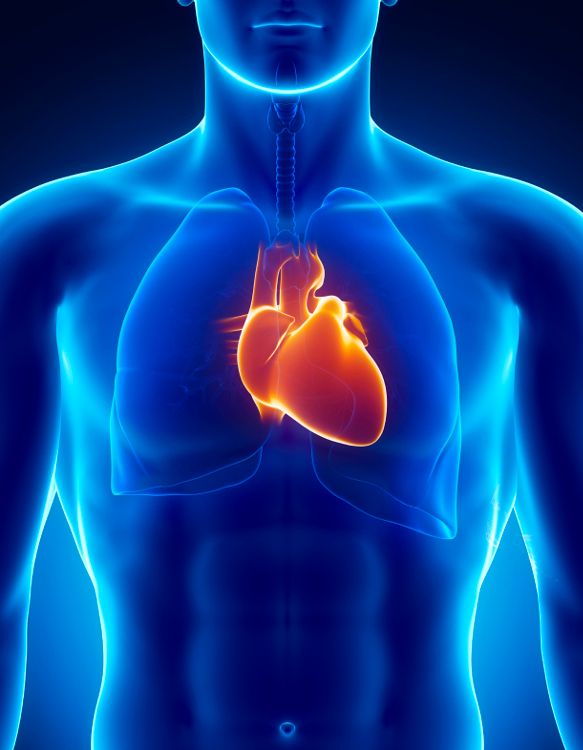CTA Improves Coronary Disease Risk Assessment
When added to exercise electrocardiography, CTA can improve five-year risk prediction.

Pairing coronary CT angiography (CTA) with exercise electrocardiography (ECG) testing could give doctors a better idea of a patient’s five-year risk for developing coronary disease than using ECG by itself, according to newly published research.
In a study published in the June 3 JAMA Cardiology, investigators from the University of Edinburgh in the United Kingdom found that CTA may augment ECG findings, giving doctors further information to more accurately assess patients.
“Although abnormal results of exercise electrocardiography are associated with coronary revascularization and future risk of adverse coronary events, coronary [CTA] may identify additional undetected coronary artery disease and add to the clinical decision-making and may be more strongly associated with future risk,” wrote the research team led by Trisha Singh, BM, with the British Heart Foundation Centre for Cardiovascular Science at the University of Edinburgh.
Although ECG has been the accepted method of evaluating the risk of heart disease in patients, recent debate has called its usefulness into question. Consequently, Singh’s team investigated whether adding coronary CTA would improve overall performance.
To make that determination, the team examined medical data from 3,283 patients included in the Scottish Computed Tomography of the Heart (SCOT-HEART) trial who had stable angina and had been evaluated between November 2010 and September 2014. The team randomized patients to have ECG alone or ECG with coronary CTA. Non-fatal heart attack or death from coronary heart disease at five years post-evaluation was the primary outcome.
Based on results, ECG alone had 39-percent sensitivity and 91-percent specificity for pinpointing coronary artery disease in patients who, then, had invasive angiography. Abnormal exercise ECG results were associated with a nearly 14.5-fold increase in coronary revascularization within one year of evaluation and a nearly 2.6-fold increase in experiencing a non-fatal heart attack or dying from heart disease within five years of evaluation.
Adding CTA to ECG, however, Singh’s team determined, strengthens the five-year risk prediction. The team determined coronary CTA was associated with improved prognostic discrimination because patients with obstructive coronary artery disease had a 10.6-fold increased risk of non-fatal heart attack or death from heart disease within five years than did patients with normal coronary arteries.
“This study suggests that abnormal results of exercise ECG are associated with coronary revascularization and the future risk of adverse coronary events,” the team wrote. “However, coronary CTA more accurately detects coronary artery disease and is more strongly associated with future risk compared with exercise ECG.”
However, some in the industry did have criticism for the way the study was designed and conducted. Pamela Douglas, M.D., from the Duke Clinical Research Institute at the Duke University School of Medicine, said, in an accompanying editorial, that the study results may not be accurate and that additional research is warranted.
“We are beginning to realize that the exercise ECG’s presentation of results as either positive or negative…while perhaps satisfying to clinicians’ need to divide patients into distinct disease classifications, significantly limits the information provided and therapeutic approaches chosen,” she wrote. “Coronary CTA, with its far more nuanced interrogation of multiple parameters, stimulates directional thinking about coronary disease and, over time, will allow us to consider other aspects of coronary disease beyond stenosis.”
What is the Best Use of AI in CT Lung Cancer Screening?
April 18th 2025In comparison to radiologist assessment, the use of AI to pre-screen patients with low-dose CT lung cancer screening provided a 12 percent reduction in mean interpretation time with a slight increase in specificity and a slight decrease in the recall rate, according to new research.
The Reading Room: Racial and Ethnic Minorities, Cancer Screenings, and COVID-19
November 3rd 2020In this podcast episode, Dr. Shalom Kalnicki, from Montefiore and Albert Einstein College of Medicine, discusses the disparities minority patients face with cancer screenings and what can be done to increase access during the pandemic.
Can CT-Based AI Radiomics Enhance Prediction of Recurrence-Free Survival for Non-Metastatic ccRCC?
April 14th 2025In comparison to a model based on clinicopathological risk factors, a CT radiomics-based machine learning model offered greater than a 10 percent higher AUC for predicting five-year recurrence-free survival in patients with non-metastatic clear cell renal cell carcinoma (ccRCC).
Could Lymph Node Distribution Patterns on CT Improve Staging for Colon Cancer?
April 11th 2025For patients with microsatellite instability-high colon cancer, distribution-based clinical lymph node staging (dCN) with computed tomography (CT) offered nearly double the accuracy rate of clinical lymph node staging in a recent study.